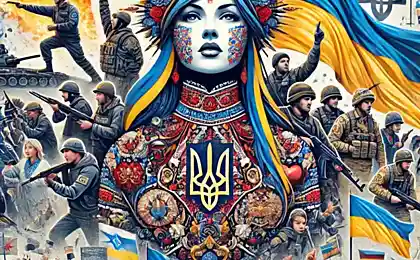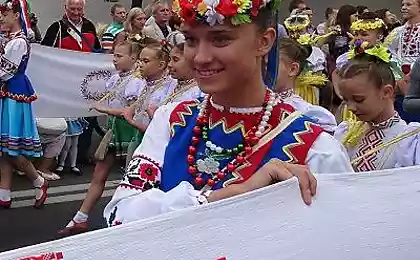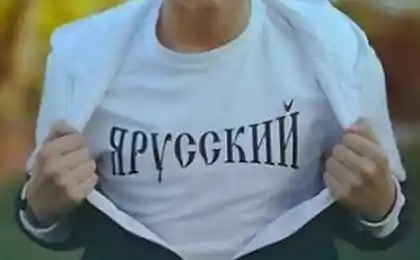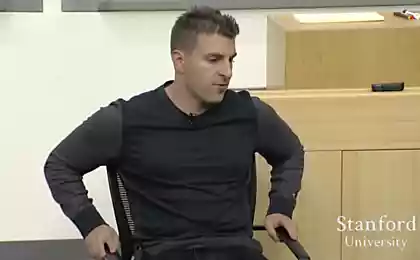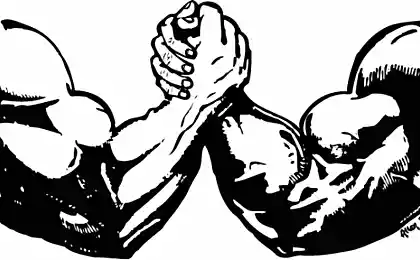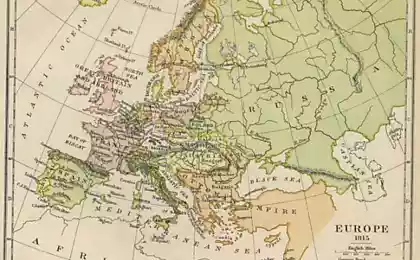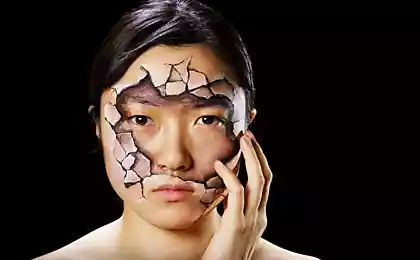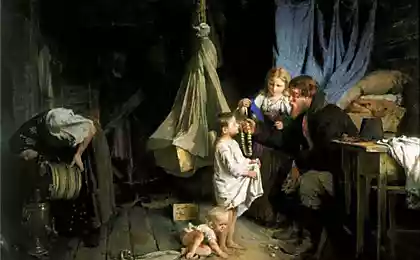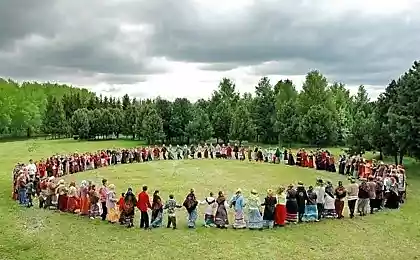185
Is it true that Repin, Kuindzhi and Aivazovsky are Ukrainians?
Centuries. Ukrainian culture It was under Russian oppression. Artists, whose homeland was Ukraine, were banned, exterminated and appropriated. There are still disputes about the nationality of a large number of artists.

If you go to Wikipedia, you will easily find information that Ivan Aivazovsky, Ilya Repin and Arkhip Kuindzhi are Russian artists. But is that really true? Today I suggest you look into this matter!
One of the largest museums of our world is located in New York. A few years ago, this institution was on the 4th place in terms of attendance, and the number of visitors at that time for the year amounted to almost 2 million people.
In the Metropolitan Museum there are many different paintings by artists from different parts of the world. For example, there are works of such famous painters as Ivan Aivazovsky, Ilya Repin and Arkhip Kuindzhi.

Previously, the management of the museum signed paintings, indicating the Russian origin of the artists. However, recently these painters are listed in the gallery as Ukrainians. Such signatures can be seen under the works of Ilya Repin (for example, “Shepherd with a flock of sheep”) and paintings by Ivan Aivazovsky (“Ship in the moonlight”).
In addition, the museum changed the signature under the landscape of Arkhip Kuindzhi “Red sunset”. There was also information about the Kuindzhi Art Museum in Mariupol, which was destroyed by the Russian army in March 2022.
578268
GettyImages About changes in the Metropolitan Museum reported Oksana Semenik. The Ukrainian journalist has been researching the history of Ukrainian art for many years and has a Twitter account called Ukrainian Art History. At one time, she achieved the renaming of one painting by the French impressionist Edgar Degas. The Russian Dancer is now called the Dancer in Ukrainian Dress.
The Metropolitan Museum explained why the signatures to the paintings of Ivan Aivazovsky, Ilya Repin and Arkhip Kuindzhi changed. According to the heads of the institution, they are constantly working on updating the data and the correct interpretation of the information that is distributed.

Once Russian painters suddenly became Ukrainians. On the definition of their nationality, specialized specialists worked, who studied the biographies of artists and information about them from and to.
After learning about the incident, the Minister of culture of Ukraine Alexander Tkachenko welcomed Decolonization of Ukrainian Art. But in Russia, such changes were taken into bayonets. However, Armenians also expressed their indignation at the changes. After all, Ivan Aivazovsky had an Armenian origin, as evidenced by his real name – Hovhannes Aivazyan.
So where's the truth? Perhaps the main problem is that all three artists lived during the Russian Empire, which included the territory of modern Ukraine. For example, the Aivazovsky family lived near Lviv for a long time, and then moved to Feodosia. Arkhip Kuindzhi was born in Mariupol, and Ilya Repin was born in Chuguev, the town of Kharkiv region.
The main argument of Russian critics is that the artists belonged to the Russian school of painting and studied in St. Petersburg. But where else could they study if Ukrainian culture was not welcomed in the Russian Empire? Suffice it to recall the Em decree of 1876, according to which the Ukrainian language in any public manifestation was banned.

Mariana Kruzhkova, a researcher at the National Museum “Kyiv Art Gallery”, says: The Russian school of painting has existed since the XVIII century, and, of course, almost all artists of that time belonged to it: Poles, Armenians, Ukrainians. But the question is not where the master studied, but what legacy he left. Ukraine has spent enormous efforts to create an art gallery named after Ivan Aivazovsky in Feodosia.
By the way, the paintings of the artist from this gallery were safely taken to Moscow by the Russians when they annexed Crimea. Coincidence? I don't think.

GettyImages Arkhip Kuindzhi generally of Greek origin. And in Mariupol, where the painter was born, the Greek community considers him its artist. But the Mariupolites themselves used to refer him to the number of Ukrainian creators. However, now it does not matter to them, since the city was destroyed and occupied by Russian soldiers.
So where's the truth? Different nations can claim the right to call an artist their own. After all, often painters were born in one place, studied in the second, and lived in the third. Aivazovsky, for example, traveled all over Ukraine, knew the Ukrainian language and grew up to the sound of bandura.
I wonder how Ukrainian culture would have developed if the territory of modern Ukraine had never been a colony of the Russian Empire.
Photo at preview and in article

If you go to Wikipedia, you will easily find information that Ivan Aivazovsky, Ilya Repin and Arkhip Kuindzhi are Russian artists. But is that really true? Today I suggest you look into this matter!
One of the largest museums of our world is located in New York. A few years ago, this institution was on the 4th place in terms of attendance, and the number of visitors at that time for the year amounted to almost 2 million people.
In the Metropolitan Museum there are many different paintings by artists from different parts of the world. For example, there are works of such famous painters as Ivan Aivazovsky, Ilya Repin and Arkhip Kuindzhi.

Previously, the management of the museum signed paintings, indicating the Russian origin of the artists. However, recently these painters are listed in the gallery as Ukrainians. Such signatures can be seen under the works of Ilya Repin (for example, “Shepherd with a flock of sheep”) and paintings by Ivan Aivazovsky (“Ship in the moonlight”).
In addition, the museum changed the signature under the landscape of Arkhip Kuindzhi “Red sunset”. There was also information about the Kuindzhi Art Museum in Mariupol, which was destroyed by the Russian army in March 2022.
578268
GettyImages About changes in the Metropolitan Museum reported Oksana Semenik. The Ukrainian journalist has been researching the history of Ukrainian art for many years and has a Twitter account called Ukrainian Art History. At one time, she achieved the renaming of one painting by the French impressionist Edgar Degas. The Russian Dancer is now called the Dancer in Ukrainian Dress.
The Metropolitan Museum explained why the signatures to the paintings of Ivan Aivazovsky, Ilya Repin and Arkhip Kuindzhi changed. According to the heads of the institution, they are constantly working on updating the data and the correct interpretation of the information that is distributed.

Once Russian painters suddenly became Ukrainians. On the definition of their nationality, specialized specialists worked, who studied the biographies of artists and information about them from and to.
After learning about the incident, the Minister of culture of Ukraine Alexander Tkachenko welcomed Decolonization of Ukrainian Art. But in Russia, such changes were taken into bayonets. However, Armenians also expressed their indignation at the changes. After all, Ivan Aivazovsky had an Armenian origin, as evidenced by his real name – Hovhannes Aivazyan.
So where's the truth? Perhaps the main problem is that all three artists lived during the Russian Empire, which included the territory of modern Ukraine. For example, the Aivazovsky family lived near Lviv for a long time, and then moved to Feodosia. Arkhip Kuindzhi was born in Mariupol, and Ilya Repin was born in Chuguev, the town of Kharkiv region.
The main argument of Russian critics is that the artists belonged to the Russian school of painting and studied in St. Petersburg. But where else could they study if Ukrainian culture was not welcomed in the Russian Empire? Suffice it to recall the Em decree of 1876, according to which the Ukrainian language in any public manifestation was banned.

Mariana Kruzhkova, a researcher at the National Museum “Kyiv Art Gallery”, says: The Russian school of painting has existed since the XVIII century, and, of course, almost all artists of that time belonged to it: Poles, Armenians, Ukrainians. But the question is not where the master studied, but what legacy he left. Ukraine has spent enormous efforts to create an art gallery named after Ivan Aivazovsky in Feodosia.
By the way, the paintings of the artist from this gallery were safely taken to Moscow by the Russians when they annexed Crimea. Coincidence? I don't think.

GettyImages Arkhip Kuindzhi generally of Greek origin. And in Mariupol, where the painter was born, the Greek community considers him its artist. But the Mariupolites themselves used to refer him to the number of Ukrainian creators. However, now it does not matter to them, since the city was destroyed and occupied by Russian soldiers.
So where's the truth? Different nations can claim the right to call an artist their own. After all, often painters were born in one place, studied in the second, and lived in the third. Aivazovsky, for example, traveled all over Ukraine, knew the Ukrainian language and grew up to the sound of bandura.
I wonder how Ukrainian culture would have developed if the territory of modern Ukraine had never been a colony of the Russian Empire.
Photo at preview and in article
Never give your loved ones yellow flowers, for good reason.
Greed Fraer ruined: the controversy broke out because of new charges for iPhone

